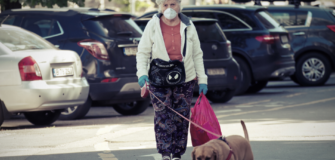Calls for infrastructure and health policy have been made by local and state government representatives and the housing and homelessness sector during today’s Preventing a Return to Homelessness – Government’s Perspective online forum.
Organised by the Australian Alliance to End Homelessness (AAEH), representatives from commonwealth, state and local government discussed practices and strategies that need to be implemented to end homelessness and rough sleeping in Australia.
Chair of AAEH, Karyn Walsh called for a homelessness recovery plan that addresses Australia’s ongoing crisis of homelessness.
“Homeless populations are very vulnerable in community transmissions. People cannot abide by public health directives of social distancing, hand hygiene and staying home if they don’t have a home or place to stay,” said Walsh.
“We need to make sure we are not leaving people behind as the recovery period starts. Moving forward it’s so critical that there is a vulnerable person and homelessness recovery plan that looks to long term goals and ensures that the curve is flattened and stays flattened,” she said.
The Hon Luke Howarth MP, Assistant Minister for Community Housing, Homelessness and Community Services spoke about the Commonwealth’s focus on housing and homelessness in Australia.
“My key focus is reducing the incidence of homelessness and safe and secure housing; and Housing First because we know this leads to better health education and safety outcomes and workforce participant and choices in the bridge to recovery,” said Minister Howarth. “The government remains committed to working across the housing spectrum to improve outcomes, particularly to those most in need.”
Director of the Centre for Social Impact, University of Western Australia Professor Paul Flatau estimates that among homelessness agencies linked to the AAEH, there have been 2,260 people rough sleeping or at immediate risk of sleeping rough sleeping around Australia who have been provided with temporary accommodation in motels and hotels and other temporary lodgings under government supported programs since the beginning of the COVID-19 pandemic.
While precise estimates are not available, the total number of rough sleepers supported could well be close to 5,000. This represents one of the most significant homelessness responses Australia has seen.
While the focus remains on increasing the supply of social housing to meet the long-term permanent housing needs of those experiencing homelessness, Professor Paul Flatau estimates that a national program in the private rental market supported by head-leasing arrangements with community housing to end homelessness among around 2,050 homelessness people could be put in place in the immediate future at a rough cost $380 per week per person (comprised of housing rental subsidies and additional support dollars to community housing and homelessness services), or $40 million per year. He says that research indicates the benefits of ending homelessness outweighs its cost.
“All our research and evaluations show significant savings and improved lives, reduced mental health issues, improved quality of life and improved employment outcomes from effective Housing First programs. Those programs have resulted, in the main, in net savings to government,” Professor Flatau said.
“Homelessness is something we don’t need to accept as a normal thing. Rough sleeping should be rare, brief and non-recurring – that is the standard we must set for ourselves and achieve. If the COVID-19 pandemic has shown anything, it’s that rapid progress is possible on that goal in short periods of time,” said David Pearson, CEO of AAEH.
“We all know that Housing First and investment in social housing is absolutely needed as a very simple solution to a very complex problem. When we pair that with support services, then we can address the underlying issues of homelessness,” Lord Mayor of City of Adelaide and Chair of the Council of Capital City Lord Mayors, Sandy Verschoor said.
“It’s the right thing to do socially and economically. This post-COVID national response gives us the perfect opportunity to do what is right. It requires a shift in thinking and a shift in investment. The primary thing we need is a significant investment in the infrastructure itself which is housing outcomes,” he said.
Pearl Dy is a community manager and journalist. She is passionate about business and development particularly involving not-for-profits, charity and social entrepreneurship.


































































































































































